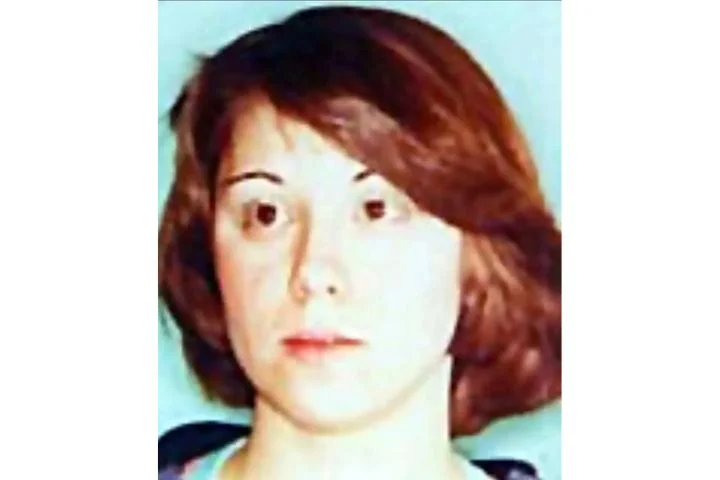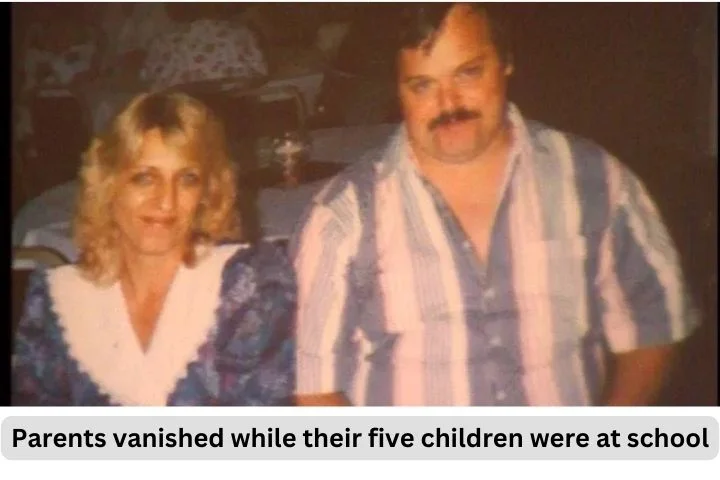Diane Schulte was extremely introverted. The 22-year-old preferred staying inside her Nampa, Idaho home with her cats and husband to going out and meeting people, and her favorite hobbies were reading and doing macrame. So when her husband, Fred Schulte, got home from work on the afternoon of Friday, March 25, 1977, and saw that Diane wasn’t home, he knew something was wrong.
All of Diane’s belongings were inside the home, including her purse, wedding ring, and a watch she always wore. Her three beloved cats were shut in the spare bedroom, where she would normally put them if she were just going outside for a short period of time. Her car was parked in its normal spot in the driveway, the day’s mail was still in the mailbox, and a UPS package was sitting on the front porch. The only things that were missing were Diane’s house keys and the key to the couple’s post office box — and Diane herself.
Fred checked with a couple of his neighbors, but none of them had seen Diane that afternoon. They had seen the UPS driver drop off a package for the couple around 3:00 pm, but he simply left it on the porch and there was no indication Diane was home at that time. Since it was completely out of character for Diane to go anywhere for an extended period of time, Fred called the Nampa Police Department and reported her missing.
According to Fred, he and Diane had gone to the library together the previous evening and checked out a couple of books. It had been a mild night, so Fred asked his wife if she wanted to take a walk after they finished up at the library, but she told him she wasn’t feeling well and wanted to go straight home. She still wasn’t feeling great when Fred left for work at 7:20 am Friday, so he had assumed she would spend most of the day in bed.
Investigators searched the couple’s home but found no signs of a struggle. There were a total of three guns in the house, but none of them appeared to have been recently fired. The only things that Fred believed to be missing from the home were a few items of clothing that Diane was wearing: blue jeans, a blue hooded sweatshirt, and a pair of yellow tennis shoes.
Detectives canvassed the neighborhood and spoke with one resident who recalled seeing Diane around 9:00 am that day, wearing the clothing described, leaving her home as if she were going to take a walk, but she didn’t see which direction Diane went.
Every neighbor the police talked to thought Fred and Diane looked very much in love, but none of them knew Diane very well. A neighbor who did not want to be named told reporters that Diane was very quiet and that the couple seemed to get along well. “They seemed like the most devoted couple we’ve ever seen.” There was nothing we saw that made us think about them.
Their second wedding anniversary was just a few days ago, and they had lived in Nampa for about a year before Diane disappeared. Fred was an employment consultant for the Idaho Employment Service in Boise. His coworkers said he was friendly, easy to get along with, and worked very hard. Neither Fred nor Diane drank, smoked, or used drugs. They looked like they would make a great couple.
Diane didn’t have any friends in Nampa because she was deliberately shy and didn’t want to talk to anyone. In her teens, she had a fight with her parents and didn’t talk to them much after that. Her only friend was a roommate from Michigan State University, and the two of them wrote letters to each other a lot. Sue Stamps, Diane’s roommate, got a letter from her not long before she disappeared. Diane didn’t write anything that made Sue think that she was having any problems in Idaho. “I’ve never heard of someone being so happy in marriage…”but Diane makes it hard to tell sometimes. “She doesn’t always tell you how she really feels.”
Her grandmother, who lived in Flint, Michigan, was the only family member Diane was close to. Two times a week, they would talk on the phone. Their last call was March 24, 1977, the day before Diane disappeared. Diane’s grandmother said she was upset because her parents wanted to visit her in Idaho, but she didn’t want to see them. She even asked Fred to call them and tell them not to come, but she looked worried that they were still going to show up.
Because they didn’t have much information, police searched bus stops and airports, hoping Diane had just decided to take a break from her life for a while. They couldn’t find any proof that she bought a plane ticket, and no one at any of the bus stops remembered seeing a woman who looked like her. There were no clues about where Diane was when they called hospitals, morgues, motels, and taxi companies.
As the detectives talked to more people who knew Fred and Diane, they began to question whether or not their relationship had been as perfect as everyone thought. Diane wrote her husband a note that said, “I know I don’t always show it, but I love you with all my heart and soul.” Other letters they found around the house seemed to back this up. I love you more than anything else in the world.
From the outside, it looked like Fred and Diane were getting along fine. There was plenty of money in the bank because Diane had studied accounting in college and kept perfect records of everything the couple bought. They had a lot of money in their joint checking and savings accounts, and in a few weeks they would get their tax refund.
Fred and Diane didn’t have any criminal records, and there were no signs of abuse in their marriage. However, some investigators thought Diane’s quiet life might have been hiding an abusive relationship. Nampa detectives asked Fred if he would be willing to come in the following week to take a polygraph test about his wife’s disappearance. This was a week after Diane was last seen. He agreed, but he wasn’t going to keep his word.
On Sunday, April 3, 1977, just 26 miles north of Weiser, Idaho, there was a single-car accident on Highway 95. The Washington County Sheriff’s Office was called. The dark blue 1975 Buick had been going very fast when it went off the road and crashed down a hill. The police found out that the car belonged to Diane Schulte, but she wasn’t driving it. Fred it was. During the drive, he shot himself in the head.
Fred put two notes about ki*lling himself at his house. One was more of a will that said who he wanted to get his property, pets, and personal belongings. On the second note, a man who was very depressed was rambling. “The love I had for my wife was strong and very important to me.” I gave her the strength to deal with a scary world, and she gave me meaning and purpose in my life. I can’t live without her now that I’ve lived with her, so by the time you read this, I will have ki*lled myself…I no longer think Diane will come back alive.
If the police were hoping for some kind of admission that Fred had kil*led his wife, they were let down. Fred made it clear in the long letter that he thought Diane had been taken from him without cause and that he didn’t want to live without her. When he talked about Steven White, 10, who had been found dead a month before Diane went missing, the note took a strange turn. “A lot of people are going after Diane Schultes and Steven Whites, but criminals are free to do their jobs with almost no fear of getting caught, from the nickel-and-dime shoplifter to the world’s politicians and businessmen.”
Everyone who knew Fred was shocked when he ki*lled himself. Sue, Diane’s old roommate, told reporters, “We don’t know what to think. We’ve all talked to the police and to each other.” We’re still not sure what happened or why it happened. Few people believed Fred was guilty of hurting his wife, but why had he given up hope that she would come back alive after only a week?
Nampa Police Detective Robert Shank noted that the timing of Fred’s sui*cide made it suspicious, as he had ki*lled himself shortly before he was supposed to take a polygraph examination about his wife’s disappearance. He and some of the other investigators believed that his su*icide was an admission of guilt. “We have no factual proof, but on the little bits of evidence we’ve picked up, we believe he k*illed her.”
Detective Shank stated that several things discovered during a search of the Schulte home backed up his theory that Fred k*illed his wife. A rug had been missing from the living room, and there was a dent in the floor that investigators believed could have been made by a bullet. There was also a four-inch hole cut out of one of the drapes in the living room; detectives thought it could have been cut to get rid of a bloodstain. They had no definitive proof of a crime, however; Fred and Diane never had visitors at their home so no one could say when the living room rug had been removed, and none of the guns in the home had been recently fired at the time Diane was reported missing.
Certain that Diane was dead, investigators concentrated on trying to locate her body. They dug up sections of the Schulte’s backyard, including a freshly planted garden, but found nothing to indicate that any evidence had been disposed of there. After learning that Fred had asked co-workers for directions to Givens Hot Springs in Owyhee County, detectives combed through that area but also came up empty.
After Fred’s su*icide, the investigation into Diane’s disappearance quickly went cold. Detectives were convinced she was dead, but without a body, they had no way to prove it. Although cold case investigators periodically went back over the case file, they were never able to determine exactly what happened to Diane.
In 2017, local news station Idaho News 6 did a three-part series on the 40th anniversary of Diane’s disappearance. They had Fred’s sui*cide note examined by Dr. Elizabeth Horn to see if she could offer any insight into his frame of mind when he wrote it. She concluded, “I really didn’t get a sense that he would have k*illed her. Of course, anything’s possible. But I feel it was written by a deeply depressed individual with a lot of anger…I get the sense he felt the world had taken her from him.”
She noted that he was clearly depressed at the time. “I also get the sense that her being taken from him, at least from his point of view, was the final straw. And that, without her, he couldn’t live in this world anymore.”
Diane Marie Schulte was just 22 years old when she vanished from her home in Nampa, Idaho in March 1977. The circumstances surrounding her disappearance remain unclear, but investigators believe that she was a victim of foul play. Diane has brown hair and brown eyes, and at the time of her disappearance, she was 5 feet 5 inches tall and weighed 118 pounds. She normally wore contact lenses or glasses, but she didn’t have either with her when she went missing. Diane was last seen wearing blue jeans, a blue hooded sweatshirt, and yellow tennis shoes. If you have any information about Diane, please contact the Nampa Police Department at 208–465–2257.






